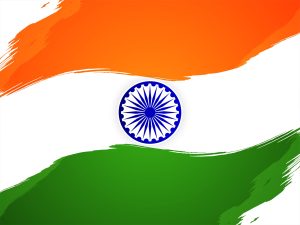Companies and law firms are seeking ways to reduce costs and eliminate administrative tasks. In patent management, two key areas, patent filing and patent translations, offer opportunities to achieve these goals.
Targeting a Major Cost Driver
a. The Cost of Patent Translation
Patent translation is a significant cost driver in the patent filing process. The need to translate complex technical documents into multiple languages can quickly escalate expenses. According to WIPO, translating an application into Chinese, Japanese, Korean, and Russian is estimated to cost between USD 3,000 and USD 6,500. This amount makes up about 75 to 80 percent of the total filing costs. Additionally, a large part of the expense of validating a granted European patent comes from the need for translations. Finding ways to reduce these costs without compromising quality is essential for businesses looking to manage their budgets effectively.
b. Overload Administrative Tasks from Paralegals
Paralegals often handle a large number of administrative tasks related to patent filings. These tasks can include preparing documents, ensuring compliance with legal requirements, and managing deadlines. Streamlining these processes can free up paralegal time for more strategic activities, thus improving overall productivity.
Streamlining the Patent Filing Process
a. Utilizing Patent Management Software
Implementing patent management software can greatly enhance the efficiency of the patent filing process. These tools provide a centralized platform for tracking applications, managing deadlines, and storing important documents. By automating many routine tasks, patent management software can reduce errors and save valuable time.
b. Standardizing Filing Procedures Across Different Jurisdictions
The complexity of filing patents in various jurisdictions can be challenging. Standardizing procedures helps mitigate this challenge by creating uniform processes that are easier to follow. This standardization ensures that all filings comply with local regulations while reducing the likelihood of costly mistakes.
Leveraging Technology for Translation
a. Utilizing Machine Translation Tools
Machine translation tools offer a cost-effective solution for translating patent documents. These tools can process large volumes of text quickly, providing a first draft that can be refined by human translators. While not perfect, machine translation can significantly reduce the time and cost associated with the initial translation process.
b. Integrating AI and Neural Networks to Improve Accuracy
Artificial Intelligence (AI) and neural networks have advanced the field of translation by improving accuracy and contextual understanding. These technologies can better handle technical terminology and complex sentence structure, making them ideal for patent translations. Integrating AI into the patent translation process ensures higher-quality outputs that require less human intervention.
c. Balancing Automated Translation with Human Oversight
Despite the advancements in automated translation, human oversight remains critical. Experienced translators can review machine-generated translations to ensure they are accurate and contextually appropriate. This balance between technology and human expertise enables companies to achieve high-quality translations efficiently.
Optimizing Resource Allocation
a. Outsourcing vs. In-house Translation Services
The decision to outsource translation services or maintain an in-house team depends on several factors, including cost, volume, and expertise. Outsourcing can be more economical and helpful for companies with urgent translation needs, while an in-house team may be beneficial for those with consistent, high-volume requirements.
b. Working with Technical Experts
Working with technical experts allows translators to clarify complex concepts and terminology, ensuring that the translation is both accurate and comprehensive.
c. Effective Project Management and Workflow Optimization
Effective project management is crucial for optimizing translation workflows. Clearly defined roles, responsibilities, and timelines help ensure that projects are completed on time and within budget. Workflow optimization techniques, such as lean principles or agile methodologies, can further enhance efficiency and reduce costs.
The Flexibility to Scale
a. Offering the Scale to Accommodate Filing and Translation Projects of Any Size
The flexibility to scale operations is essential for managing varying volumes of patent filings and translations. Scalable solutions allow companies to handle both small and large projects efficiently, ensuring that resources are allocated effectively regardless of the project size.
b. Collaborating with Language Service Providers
Collaborating with language service providers can offer the necessary flexibility to manage varying translation needs. These providers often have extensive networks of translators and use technology to streamline the translation process, ensuring that projects are completed efficiently and to a high standard.
c. Utilizing Translation Memory and Glossaries for Consistency
Translation memory and glossaries are valuable tools for maintaining consistency across translations. Translation memory stores previously translated segments, allowing for reuse in future projects. Glossaries provide standardized terminology, ensuring that terms are used consistently throughout all patent translation documents.
Quality Control and Assurance
a. Establishing Rigorous Quality Control Processes
Implementing rigorous quality control processes is essential for ensuring the accuracy and reliability of translations. This may include multiple rounds of review, proofreading, and validation by subject matter experts. Quality control processes help identify and correct errors before the final translation is delivered to the client.
b. Ensuring Service Offered Meets Industry Standards
Professional qualifications demonstrate a translator’s proficiency and commitment to maintaining the highest quality standards in their work.
To help you with your search, look for patent translation agencies with the following:
- ISO 9001 – means that a quality management system meets international standards.
- ISO 13485 – The ability to provide medical devices and related services that consistently meet customer and applicable regulatory requirements.
- ISO 17100 – evaluates an efficient management system and assesses file security, staff development and general working practices.
By adopting these strategies, companies can decrease costs while improving productivity in patent filings and translations. Embracing technology, optimizing resource allocation, and focusing on quality control is key to achieving these goals.
EC Innovations is dedicated to providing professional intellectual property language solutions to the world’s leading corporations and law firms. Our service can help clients with a streamlined filing process, managed costs, translation quality, and seamless foreign patent filing. Interested in learning more about patent translation? Contact us and we will be happy to assist you.





